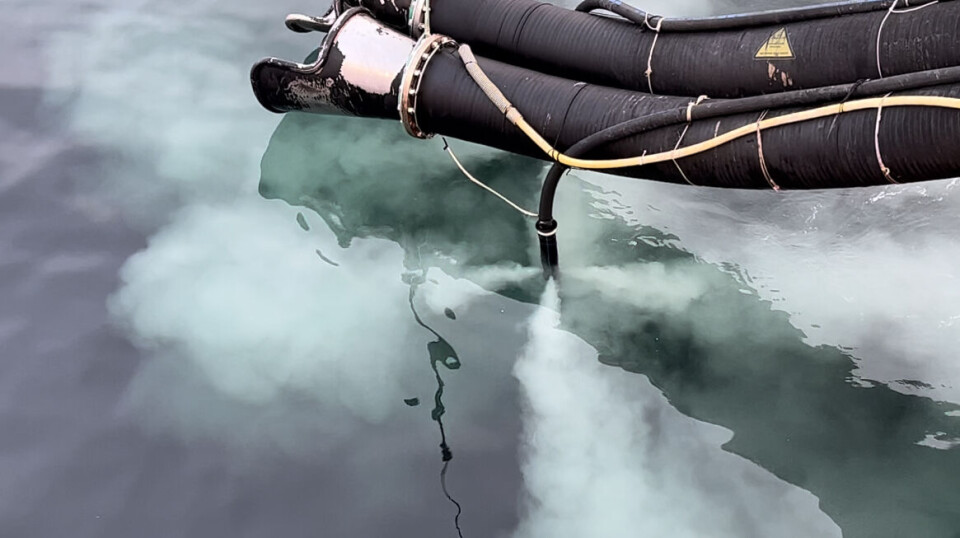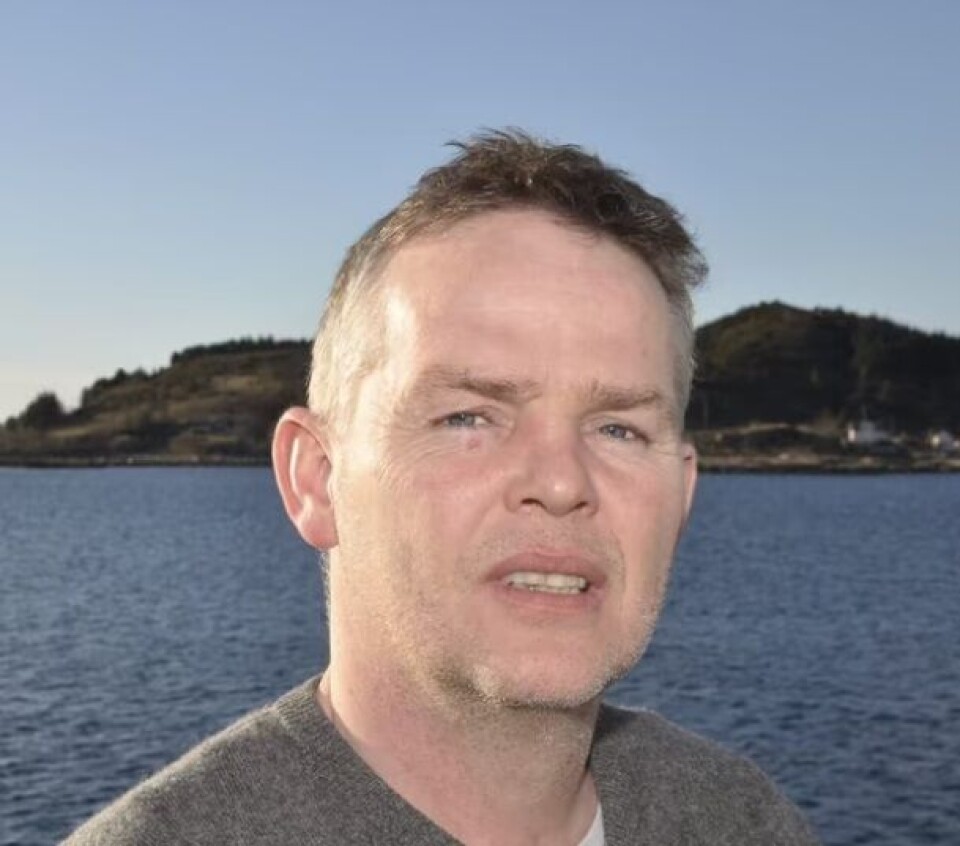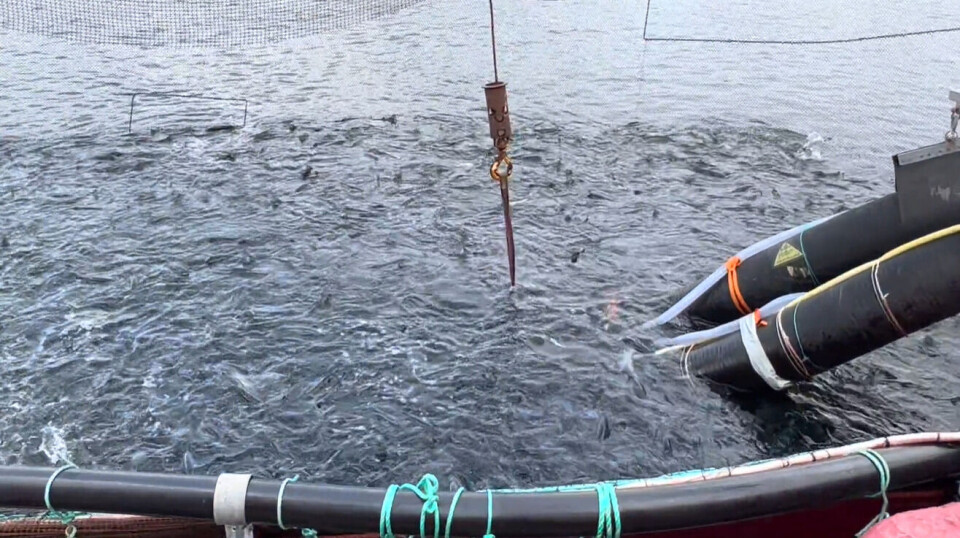
Smallest bubbles 'make the biggest difference to oxygenation'
Delousing contractor has only one regret about switching to nanobubbles – that he didn’t know about them sooner
Together with his brother Ronny, Kenneth Beitveit runs the company Beitveit Holding. In 2020, the two brothers entered the Norwegian salmon sector with the newly acquired delousing vessel Sea Liberty I.
During delousing, the fish are tightly “crowded” next to the vessel, then pumped into the delousing system. In this process, as with all fish treatments, maintaining a sufficiently high oxygen level in the water is a critical factor for fish welfare.
In the beginning, the company used a bank of oxygen cylinders to supply oxygen. The oxygen was then delivered through a diffuser system comprising perforated hoses that were supposed to introduce oxygen into the water.
However, the diffuser system required large amounts of oxygen.
“We had to constantly replace the oxygen cylinder-banks; it became expensive, and there was a lot of logistics involved in filling oxygen cylinders,” says Kenneth Beitveit.
As a result, the company ordered two large oxygen generators, one for Sea Liberty I and one for the company’s new delousing vessel, Sea Admiral, which started operations in 2023. The generators provided a stable supply of oxygen, but only solved part of the problem.
The generators delivered plenty of oxygen. The problem was that the fish couldn’t utilise it ... the oxygen bubbles rose quickly, broke the surface and were lost to the atmosphere
“The generators delivered plenty of oxygen. The problem was that the fish couldn’t utilise it,” says Beitveit.
“The diffuser hoses delivered a fountain of bubbles into the sea, but the oxygen bubbles rose quickly, broke the surface and were lost to the atmosphere.”
Together with customers, Beitveit Holding decided to test the nanobubble technology from US company Moleaer, which is headquartered in California and has a network of distributors in the Americas and Europe, plus a Scandinavian director, Jan Eric Haagensen, based in Norway.
Two Trinity nanobubble generators were ordered and installed on the delousing vessels in early 2023. The generator is integrated into the existing oxygen distribution system and produces tiny nanobubbles of oxygen. Unlike the system with diffuser hoses, nanobubbles do not rise but remain in the water. Kenneth Beitveit noticed a significant difference.

“It worked like a charm. We got a completely different effect. The water gets a greenish tint but remains clear at the same time; we could see that the oxygen stayed in the water.”
Beitveit’s observations were backed up by monitoring.
“The oxygen meters gave good values with the old system as well, but only where the diffuser hoses released bubbles, and only as long as the system was running. As soon as we turned it off, the values dropped. With nanobubbles, we got a completely different dispersion and stability in the water,” says Beitveit.
Three times more efficient
The tiny size of nanobubbles is one factor that makes them so ueful for oxygenating water. Nanobubbles are around 100 nanometers in diameter, 2,500 times smaller than a grain of salt. The size gives the bubbles properties that prevent them from rising to the surface but instead spread in the water.
Research conducted in 2017 at UCLA (University of California) showed that with Moleaer's nanobubble technology, 86% of the supplied oxygen was dissolved in the water, while traditional diffuser systems only achieved 28%.
Another property of nanobubble technology is that not all oxygen bubbles are immediately dissolved in the water. Research has shown that nanobubbles can stay in the water for several weeks without rising to the surface or collapsing. Thus, the bubbles act as a buffer to maintain oxygen levels in the water over time.
Moleaer says nanobubbles ensure stable oxygen saturation during fish treatments, such as delousing, transport, or in connection with waiting pens before processing.
Improved fish welfare
The technology is also very useful for maintaining oxygen levels throughout the pen, for example, during seasonal variations and sudden drops in oxygen saturation. Nanobubble technology has also proven effective in maintaining a stable oxygen level in land-based facilities. The result is improved fish welfare and better production in the facility.
For Beitveit Holding, using nanobubbles has also led to a saving in operating costs.
“With the nanobubble generator, we use only a quarter of the oxygen we used before,” says Kenneth Beitveit.
“Now we can run our oxygen generators at a very low pace. Since service intervals are measured by cubic metres of produced oxygen, we don’t have to service them as often. This is significant when each service costs NOK 40-50,000 (£2,960-£3,700).
With less workload on the generators, less power is drawn from the vessels. And that, in turn, means lower expenses for diesel.
We can kick ourselves now for buying the oxygen generators, but we didn't know any better. If it were today, we would never have ordered them.
When Beitveit sees how much less oxygen is needed with nanobubble technology, he has come to the conclusion that he might as well have skipped investing in two massive oxygen generators.
“We can kick ourselves now for buying the oxygen generators, but we didn't know any better. If it were today, we would never have ordered them. Nanobubble technology is here to stay. If we have more delousing vessels in the company, it will be oxygen cylinders and not oxygen generators on board.”
Maintenance on the nanobubble generator is also simple.
“We haven't had it in for service yet. We pour in a cleaning solution every 14 days. It takes ten minutes and is very simple,” says Beitveit.
Lower costs
The transition also results in lower costs for service and handling of diffuser hoses.
“We know from one of our customers, who used the diffuser hose system for ten years, that it had an annual service cost of NOK 70-120,000. We now avoid that. Now, it’s just regular air hoses we lay out. We still don’t know the service interval on them, but it’s a much simpler system.”
With regard to work and handling, it's like night and day. With the new system, there is no handling at all, says Beitveit, who adds that his customers are “absolutely delighted” with the transition to nanobubbles.
“For them, it was a turning point. We were probably the first delousing vessel to install a nanobubble oxygenation system for them. I don’t think our customers will want anything else now, seeing the results. They see that nanobubbles provide a nice dispersion to the water, and it works like a charm.
“This is the best innovation for oxygen supplementation on the market. There are no other systems that come close.”























































